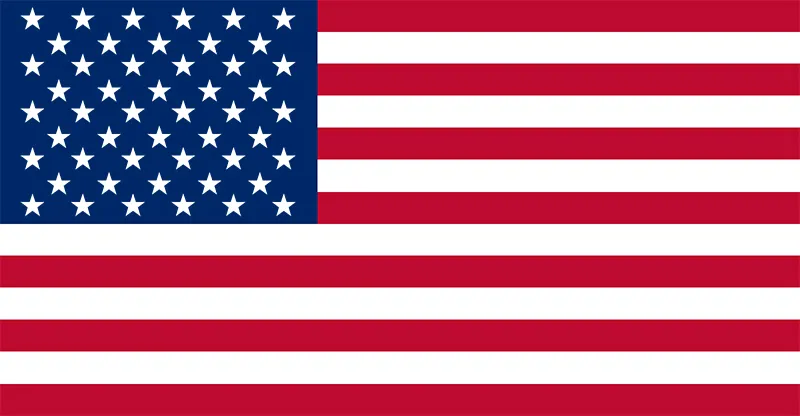USA

Our graduate programs go beyond mainstream thought and practices, fostering intellectual inquiry and creative mastery.
STUDY IN USA
Across the ages, the United States has consistently stood as the preferred destination for global scholars. With an annual influx of over a million international students, the USA beckons aspiring minds seeking a world-class education and a launchpad for their professional journeys. Notably, India contributes significantly, constituting a robust 20% of the international student body, underscoring its status as one of the foremost contributors. Renowned as the Land of Dreams, the USA lives up to its moniker by presenting students with unparalleled opportunities in research, innovation, and entrepreneurial pursuits.
This nation of dreams boasts a rich tapestry of cultures, having not just embraced but actively welcomed diversity throughout its history. Housing an impressive 17 universities within the global top 50 rankings, the USA solidifies its standing as an educational powerhouse. Beyond academia, the vast expanse of this colossal nation unfolds a visual symphony — from expansive deserts and majestic snow peaks to towering mountains, cascading waterfalls, and picturesque beaches — a breathtaking panorama to captivate the senses and nurture the soul.
WHY USA UNIVERSITIES
In the illustrious landscape of global education, the USA claims a staggering presence with 48 out of the top 100 universities, a testament to the unquestionable quality of education offered. However, the allure of the USA extends far beyond academic prowess. Here’s what beckons students to its shores:
Academic Pinnacle:
Undoubtedly, the USA hosts some of the world’s preeminent universities. Times Higher Education underscores this dominance, revealing that 15 of the top 20 universities globally are American institutions. The likes of MIT, Stanford, and Harvard stand as veritable dreams for every aspiring student.
Quality of Life:
Beyond academics, the USA is a mosaic of thousands of lives, each contributing to the rich tapestry of its history and unique customs. Regardless of your chosen school, you’re immersed in an environment teeming with a diverse cultural legacy.
Student Satisfaction:
At the forefront of technology and science, the USA provides students with access to cutting-edge research and technology. This not only enriches practical knowledge but significantly enhances employability. Studying in the USA means joining a system globally recognized for its modern educational assets.
Endless Possibilities:
In the USA, the trajectory of success knows no bounds, and avenues for hope are boundless. By choosing to study in the USA, you become part of a system with not only global recognition but also long-term career value.
Employability:
Possessing a degree from the USA is a golden ticket to a promising career. High-paying jobs abound, with students earning an average salary of $50,000 to $60,000. The flexibility of working up to 20 hours per week, coupled with opportunities for internships and part-time employment, further enhances the holistic educational experience.
Embarking on an academic journey in the USA isn’t merely a pursuit of education; it’s a passport to a world of possibilities, professional success, and a vibrant cultural tapestry that shapes both learning and life.
TYPES OF USA UNIVERSITIES
- Brown University
- Columbia University
- Cornell University
- Dartmouth College
- Harvard University
- University of Pennsylvania
- Princeton University
- Yale University
- University of California System
- University of Texas System
- University of Florida
- University of Michigan
- University of North Carolina System
- University of Illinois System
- University of Wisconsin System
- Ohio State University
- Stanford University
- Massachusetts Institute of Technology (MIT)
- California Institute of Technology (Caltech)
- New York University
- Northwestern University
- Duke University
- Johns Hopkins University
- Brown University
POPULAR COURSES
Here are the top fields preferred by international students:


WHAT IS STEM
| STEM | NON-STEM |
In the context of education and employment, STEM and non-STEM refer to different fields of study and career paths.STEM (Science, Technology, Engineering, and Mathematics):
STEM fields are often associated with a strong emphasis on analytical and technical skills. Jobs in STEM are diverse and can include roles such as software developers, engineers, scientists, mathematicians, and IT professionals.Science: This includes disciplines such as biology, chemistry, physics, and environmental science.
Technology: Fields like computer science, information technology, and telecommunications fall under this category.
Engineering: Various branches of engineering, such as civil, mechanical, electrical, and aerospace engineering, are part of STEM.
Mathematics: Pure and applied mathematics, statistics, and related fields are considered STEM disciplines.
| Non-STEM fields generally focus on a broader range of skills, including critical thinking, communication, and creativity. Careers in these fields can include roles such as writers, artists, historians, psychologists, and business managers.Humanities: This includes fields like literature, philosophy, history, linguistics, and cultural studies.
Social Sciences: Sociology, psychology, economics, political science, and anthropology are examples of social science disciplines.
Arts: Fine arts, performing arts, graphic design, and other creative disciplines fall into the non-STEM category.
Business and Management: Business administration, marketing, finance, and management are often considered non-STEM fields.
|
HOW IS IT IMPORTANT
| STEM | Non-STEM |
| Innovation and Technological Advancement: STEM fields drive innovation and technological progress, leading to the development of new products, services, and solutions. Breakthroughs in science and technology have a profound impact on various industries, improving efficiency and quality of life. | Cultural and Artistic Enrichment: Non-STEM fields, including the humanities and arts, contribute to cultural enrichment and the understanding of human experiences. Literature, art, and philosophy provide insights into diverse perspectives and contribute to a well-rounded education. |
| Economic Growth: STEM industries contribute significantly to economic growth by creating jobs, fostering entrepreneurship, and driving productivity. Countries with strong STEM sectors are often more competitive in the global economy. | Economic Growth: STEM industries contribute significantly to economic growth by creating jobs, fostering entrepreneurship, and driving productivity. Countries with strong STEM sectors are often more competitive in the global economy. |
| Problem Solving and Critical Thinking: STEM education emphasizes problem-solving skills and critical thinking, which are essential for addressing complex challenges in various domains. Scientific and engineering approaches help find evidence-based solutions to societal issues. | Communication and Collaboration: Non-STEM fields often emphasize strong communication, critical thinking, and interpersonal skills. Effective communication is essential in all professional settings and is particularly emphasized in fields such as journalism, public relations, and communication studies. |
| Global Challenges: STEM plays a crucial role in addressing global challenges such as climate change, healthcare, energy, and food security. Scientific research and technological advancements are key to finding sustainable solutions to these challenges. | Global Challenges: STEM plays a crucial role in addressing global challenges such as climate change, healthcare, energy, and food security. Scientific research and technological advancements are key to finding sustainable solutions to these challenges. |
Balance and Interconnectedness
- A balance between STEM and non-STEM fields is crucial for a well-rounded education system and workforce.
- Interdisciplinary collaboration between STEM and non-STEM professionals often leads to innovative solutions to complex problems.
- Ethical considerations and societal impacts are critical aspects that both STEM and non-STEM fields need to address.
In summary, the importance of STEM and non-STEM fields lies in their complementary roles in advancing knowledge, fostering innovation, addressing societal challenges, and contributing to a balanced and thriving society. Both are essential for the holistic development of individuals and the progress of nations.
How it Impact the work permit in USA
| STEM Fields | Non-STEM Fields | |
| Standard OPT | F-1 visa students who graduate from U.S. institutions in STEM fields may be eligible for an extended period of Optional Practical Training (OPT). The standard OPT period is 12 months, but STEM graduates can apply for a 24-month extension. | F-1 visa students in non-STEM fields are eligible for the standard 12-month Optional Practical Training (OPT) period. |
| H-1B Visa and Other Categories | The H-1B visa program is commonly used by employers to hire foreign workers in specialized occupations, often in STEM fields.There are specific visa quotas for H-1B visas, and individuals with STEM qualifications may have an advantage in the competitive selection process. | While the H-1B visa program is commonly used for STEM occupations, individuals in non-STEM fields may still be eligible for H-1B visas if their positions meet the program’s requirements.Other work visa categories, such as the L-1 visa for intracompany transfers, may be applicable across various fields. |
| Green Cards (Permanent Residency) | Certain employment-based green card categories, such as the EB-2 and EB-3 preferences, may have specific criteria that align with STEM qualifications.Priority is often given to individuals with advanced degrees in STEM fields. | Employment-based green card categories are not limited to STEM fields. Non-STEM professionals may qualify under different preferences, such as the EB-2 and EB-3 categories. |
EDUCATIONAL REQUIREMENT
- Academic transcripts (Admits, Marksheets, Provisional etc and diplomas) from all previously attended institutions
- Proof of English language proficiency (IELTS or TOEFL)
- Passport and visa
- Motivation letter or Statement of purpose
- Letters of recommendation
- Resume / CV
- Experience / Internship certificates
- Additional requirements for colleges
- Some colleges may require additional documents, such as a portfolio or an audition.
- Additional requirements for universities
- Some universities may require additional documents, such as standardized test scores (SAT or ACT) or GRE, GMAT, MCAT, LSAT scores.
- English language proficiency requirements
- The minimum English language proficiency requirements vary depending on the institution. However, most institutions require an IELTS score of 6.5 or higher or a TOEFL score of 80 or higher.
INTAKES IN THE USA
| Intakes | Duration |
| Fall intake (MAJOR) | August to September |
| Spring intake | January to March |
| Summer intake | May to June |
COST TO STUDY IN USA
University application fees are usually between 75-100 USD, depending on the university. If you have trouble paying your admission fee, contact the university or programme directly.
Universities in the US are majorly divided into two categories – Public/State and Private. The education cost at a public/state university is comparatively lesser than that of a private institution. Your expenditure on tuition fees depends on the type of qualification and university or school you opt for.
To cover tuition fees, you will need approx. $8,000 to $55,000 (USD) a year (indicative).
| School | Tuition fees in USD (indicative) |
| Undergraduate bachelor degree | $20,000 to $40,000 per year |
| Graduate programs | $20,000 to $45,000 per year |
| Doctoral degree | $28,000 to $55,000 per year |
Living Cost: USD 10,000 to USD 12,000 per year.
SCHOLARSHIPS TO STUDY IN USA
The amount of money available and the type of award varies between institutions. Certain research programs may provide up to 100% of the tuition fee besides covering a part of your living expenditures.
Here are some popular scholarship programs you can apply to study in the US as an Indian student:
| S.No. | Name of the scholarship | Description |
| 1 | Fulbright- Nehru Fellowships (Government-funded) | Applicable for international students who are applying to master’s or PhD programs; this scholarship covers tuition fees, accident and sickness coverage as per US guidelines, airfare, and living costs |
| 2 | Hubert Humphrey Fellowship Program (Government-funded) | This program is a part of the Fullbright program and aims to bring an accomplished young and mid-career professional from a developing country to study in the US for 10 months of non-degree graduate study and related practical experience |
| 3 | #YouAreWelcomeHere Scholarship (Non-Government scholarship) | It’s a scholarship and social media campaign designed to welcome international students into the US higher education system irrespective of the subject area |
| 4 | UEFA (non-government scholarship) | This is a summer program sponsored by Abbey Road Inc. which grants scholarships to 14-18 aged high school student that shows exemplary performance in their academics and extracurricular activities |
| 5 | AAUW International Fellowships (non-government scholarship) | These fellowships are awarded to international women students for full-time study and research in the US. It supports both graduate and post-graduate students accredited in the US institutions |
APPLICATION PROCEDURE IN USA

VISA PROCESS OF USA
Student visa requirements for the US
The US Government offers three different student visa types:
| S.No. | Types of student visa | Description |
| 1 | F-1 Student Visa | to study at an accredited US college or university or to study English at an English language institute |
| 2 | J Exchange Visa (J-1) | for participation in an exchange program, including high school and university study |
| 3 | M Student Visa (M1) | for non-academic or vocational study or training in the US |
POPULAR COMPANIES IN USA










POPULAR PLACES TO STUDY IN USA
1. Boston
2. New York
3. San Francisco
4. Chicago
5. Los Angeles
How to Apply?
- You Apply
Tell us a little about yourself and we’ll help with the rest. Our convenient online application tool only takes 10 minutes to complete.
- We Connect
After you submit your application, an admissions representative will contact you and will help you to complete the process.
- You Get Ready
Once you’ve completed your application and connected with an admissions representative, you’re ready to create your schedule.
